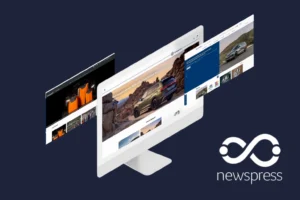PR measurement has evolved far beyond media impressions and vanity metrics. Today’s communications professionals must demonstrate how campaigns drive tangible business outcomes, from reputation lift to pipeline influence.
However, meaningful PR measurement requires the right KPIs, ethical tracking practices, and tools that go beyond simple coverage counts.
This guide outlines the most effective ways to measure PR success, with KPIs for every channel and strategic advice to make reporting more insightful and operational.
What is PR Measurement?
PR measurement is the process of tracking, evaluating, and interpreting the performance of public relations efforts.
It helps teams make data-driven decisions that go beyond awareness and connect PR efforts to more general business goals.
Outcomes vs. Outputs
Tactical metrics, press releases, articles, and social media mentions are examples of outputs.
On the other hand, outcomes, like better sentiment, more visitors to a website, or a change in perception, measure influence or change. To show value, teams must measure both tactical metrics and outcomes.
How PR Measurement Differs From Marketing Analytics
Paid channels with clickstream attribution are commonly used in marketing analytics. PR, on the other hand, focuses on sentiment, earned media, and indirect influence.
Public Relations is valuable because it can create long-term trust and reputation, even though it is more difficult to quantify.
Why PR Measurement Matters
Without measurement, PR is guesswork; with it, every campaign becomes a roadmap for smarter results.
Business Alignment and Decision-Making
Measurement ensures PR is tied to business priorities, whether launching a product, responding to public concerns, or building thought leadership.
It enables more transparent decision-making and better resource allocation.
Budget Justification and Prioritisation
When PR teams report on ROI, they earn the confidence of leadership. Measurement validates investment, supports budget growth, and helps prioritise the most effective tactics.
Continuous Improvement Loops
Tracking PR performance encourages a test-and-learn culture. Teams can see what’s working, course-correct faster, and improve campaign quality over time.
Supports Reputation Risk Management
Measurement also acts as an early warning system. By tracking coverage tone, issue velocity, and influencer sentiment, PR teams can flag and address risks before they escalate.
Principles and Standards of PR Measurement
Clear principles and industry standards keep your metrics consistent, credible, and comparable.
SMART Objectives
Setting specific, measurable, achievable, relevant, and time-bound goals creates clarity about what success looks like for each campaign or channel.
Barcelona Principles (Applied)
The Barcelona Principles 3.0 establish global best practices for PR measurement. These include prioritising outcomes over outputs, embracing transparency, and using qualitative and quantitative data.
Ethics, Transparency, and AI Disclosure
PR teams must properly label AI-generated content and watch out for deepfakes and manipulated narratives as synthetic content becomes more prevalent.
Core KPIs to Use for PR Measurement
These essential KPIs clearly show how your PR efforts are performing and where to improve.
Reach and Visibility
Track how many people potentially saw your message. This includes media mentions, impressions, and estimated readership.
Share of Voice (Overall, Topic, Channel)
How visible is your brand compared to competitors? Share of voice should be broken down by overall percentage, topic-specific coverage, and channel (e.g., broadcast, social, or print).
Message Pull-Through and Sentiment
Are your main points accurately summarised or quoted? Keep tabs on message pull-through rates and sentiment analysis. AI tools can help you evaluate the accuracy of media narratives.
Writing assistants like Grammarly can also measure emotional tones such as sarcasm, excitement, and frustration.
Authority and Quality of Coverage
Not all forms of coverage are made equal. Assign weight based on outlet credibility, domain authority, or audience reach. Top-tier placements or industry publications may have greater influence.
Engagement and Site Actions
Track website traffic and behaviour stemming from PR efforts using UTM links. Look for session duration, bounce rates, or conversions on content seeded via media.
Reputation and Trust Signals
Measure NPS (Net Promoter Score), brand trust surveys, or executive visibility to gauge intangible reputation growth over time.
Risk and Issues Metrics
Monitor tone, speed of escalation, volume of negative mentions, and recovery patterns in crisis or controversy.
Channel-Specific KPIs for PR Measurement
Each PR channel tells a different story; these tailored metrics help you read them accurately.
Media Relations
Use media monitoring tools to track pitches sent, stories placed, journalist responsiveness, and quote accuracy.
Social and Creator
Track mentions, influencer reposts, video views, and creator engagement. Look at both paid and organic campaigns.
Newsroom, SEO, and GEO (Generative Search)
Measure traffic to your myNews hub, keyword rankings, and how your brand appears in AI-generated search overviews, and audit regularly for factual accuracy.
Events and Speaking
Count registrations, attendance, media pickup, and post-event traffic or downloads. Also track social chatter during and after the event.
Thought Leadership and Content
You should track the frequency of citations to executive articles or whitepapers. Keep tabs on how frequently executive articles or whitepapers are cited.
Track backlinks, shares, and guest speaking invitations using earned media tracking to find mentions originating from branded content.
Crisis and Issues Response
Key metrics include:
- Volume and velocity of coverage
- Time to respond publicly
- Sentiment before and after the response
- Media consistency across regions
Tracking and Instrumentation for PR Measurement
The right tools and setups ensure you capture reliable, actionable PR data from the start.
Data Sources and Integrations
Connect your PR reporting software with tools like Google Analytics, CRM platforms, and media databases to centralise tracking.
Tagging and Taxonomy (Campaign, Topic, Market)
Organise media coverage by campaign, product, theme, or region. This can improve filtering and help attribute performance to specific initiatives.
UTM and Link Strategy
Use custom UTM parameters on links shared with media, influencers, or partners to measure referral performance accurately.
AI Overviews and GEO Monitoring
Use tools to extract and analyse AI-generated summaries in ChatGPT, Google SGE, and other engines. Ensure AI output is accurate and brand-safe.
Dark Social Estimation
Use landing page spikes, branded search lifts, or direct traffic as proxies for dark social engagement through channels like Slack or email.
First-Party Data and Attribution Links
Implement lead capture forms on newsroom content or gated assets. Use smart attribution links to understand post-click behaviour and build a stronger data foundation.
Data Quality and Governance
To ensure accuracy, review and audit data pipelines monthly and standardise naming conventions, tagging rules, and source validation.
Reporting Cadence and Dashboards for PR Measurement
Well-structured dashboards and a consistent reporting rhythm keep stakeholders informed and aligned.
Daily/Weekly Operations
Track trending topics, sentiment, and mentions of crises. Set up alert thresholds to react quickly to volume spikes.
Monthly Performance Review
Report on coverage quality, campaign-specific results, and KPIs. Use this review to guide future outreach or content initiatives.
Quarterly Outcomes and Attribution
Show long-term value. Include:
- Earned reach growth
- Share of voice vs. competitors
- Traffic or pipeline influenced
- Reputation survey improvements
- Transforming PR reporting
Attribution and Impact for PR Measurement
Strong attribution connects PR efforts to tangible business outcomes, proving their value.
Assisted Conversions and Pipeline Influence
Track visitors influenced by PR campaigns who later become leads or customers. Integrate data with CRM systems for cross-functional insight.
Lift Tests (Pre/Post, Geo Holdouts)
Compare performance before and after campaigns. For larger efforts, use regional holdouts or test markets to isolate PR effects.
MMM/Econometrics for PR
Mature teams can use media mix modelling (MMM) to quantify PR’s role among other marketing efforts. Econometric modelling links PR to sales, brand equity, or search uplift.
Benchmarks and Targets in PR Measurement
Benchmarks set context, and targets keep your PR strategy ambitious yet focused.
Baseline vs. Stretch Goals
Set benchmarks from historical performance, then stretch to drive performance improvements. Track what’s achievable vs. aspirational.
Industry/Peer Benchmarks
Benchmarking against similar brands helps you understand where you stand. Compare share of voice, sentiment, and media reach using industry reports or tools that offer anonymised competitor data.
Seasonality and Event Windows
Consider seasonal spikes like holidays, launches, and conferences when setting goals or analysing data.
Owned vs. Earned Benchmarks
Track both types separately. For example:
- Owned: Newsletter open rate
- Earned: Message pull-through rate
- Both should reflect the different nature of control and influence.
Common Pitfalls to Avoid for PR Measurement
Spot and sidestep the most frequent mistakes that derail meaningful PR analysis.
AVEs and Vanity Metrics
Many experts have criticised advertising value equivalency (AVE), and it is no longer considered credible.
This means you should avoid overemphasis on reach or impressions without context.
Misattribution and Double-Counting
Clarify who owns shared metrics like traffic or leads. Align reporting between PR and marketing to avoid overlap or inflated results.
Sampling Bias and Data Gaps
Incorporate small blogs, local press, and non-English coverage to avoid blind spots. Also, estimate the hidden impact from dark social using referral traffic and branded search surges.
Governance and Compliance for PR Measurement
Ethical, transparent measurement practices safeguard credibility and stakeholder trust.
Privacy, Consent, and Regional Regulations
Ensure that tracking and data tools comply with GDPR, CCPA, and other local laws and document user consent where needed.
AI-Generated Content Labelling and Deepfake Monitoring
Clearly label any AI-generated media and monitor for unauthorised uses of brand likeness in synthetic content.
Learn More About PR Measurement
Effective PR measurement shows the true worth of communications in terms of influence, trust, business impact, and exposure.
With the correct KPIs, tracking instruments, and reporting schedule, PR teams can go beyond storytelling and achieve strategic impact
Ready to unlock deeper insights and results? Book a demo to see how Newspress can help you elevate your measurement and transform PR reporting from reactive to proactive.





